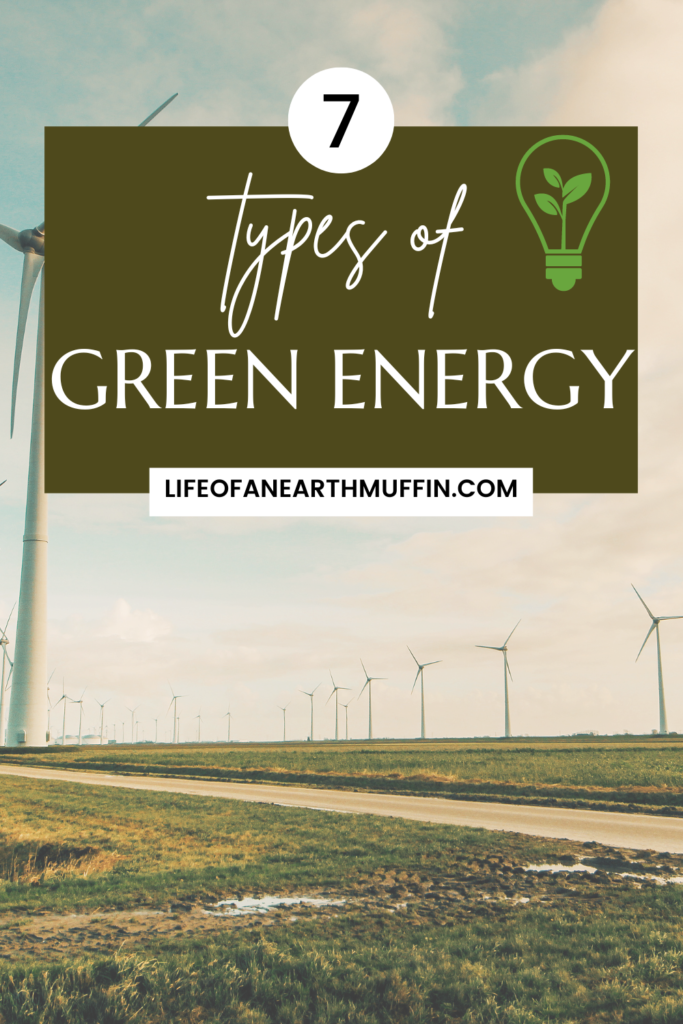Hey earth muffins! The demand for sustainable and renewable energy sources has never been greater. Green energy alternatives offer a promising solution to reduce our reliance on fossil fuels and mitigate climate change. In this blog post, we’ll delve into the different types of green energy that are paving the way to a cleaner, more sustainable future.

~Solar energy:
Solar energy is one of the most well-known and widely adopted forms of green energy. It harnesses the power of the sun’s rays through solar panels. These panels convert sunlight into electricity. This clean and abundant energy source is used in residential, commercial, and industrial applications, making it accessible to a wide range of users.
~Wind energy:
Wind turbines capture the kinetic energy of the wind and convert it into electricity. Wind energy has seen remarkable growth in recent years; as a Michigander, I’ve definitely noticed a lot more turbines constructed on our many corn fields!
~Hydroelectric power:
Hydroelectric power taps into the energy of flowing or falling water to generate electricity. Dams and reservoirs are commonly used to control the flow of water, directing it through turbines to produce clean energy. Hydroelectric power is not only renewable but also highly reliable with a constant flow of water.
~Biomass energy:
Another one of the types of green energy is biomass. Biomass energy is derived from organic materials such as wood, agricultural residues, and even municipal solid waste. These materials are converted into biofuels or burned to produce heat and electricity. Biomass energy recycling processes can also help reduce waste while providing eco-friendly energy. A win-win!
~Geothermal energy:
Geothermal energy harnesses heat from within the Earth’s core. Geothermal power plants use the natural heat of underground reservoirs of hot water and steam to generate electricity. This form of energy is highly efficient and produces minimal emissions.
~Waste-to-energy:
In addition to the above types, waste-to-energy facilities convert municipal solid waste into electricity or heat. These facilities not only reduce landfill waste but also generate clean energy in the process.
~Nuclear energy:
While controversial, some advanced nuclear reactor designs offer promise as a low-carbon energy source. These reactors are designed to be safer, more efficient, and produce less long-lived nuclear waste compared to traditional nuclear power plants.

The diverse array of green energy alternatives offers hope for a sustainable and cleaner future. Combining these technologies and fostering a global commitment to renewable energy are crucial steps toward mitigating climate change and ensuring a sustainable energy future for generations to come. Have you adopted the use of any green energies yet??
Love,
Jenna ♥




